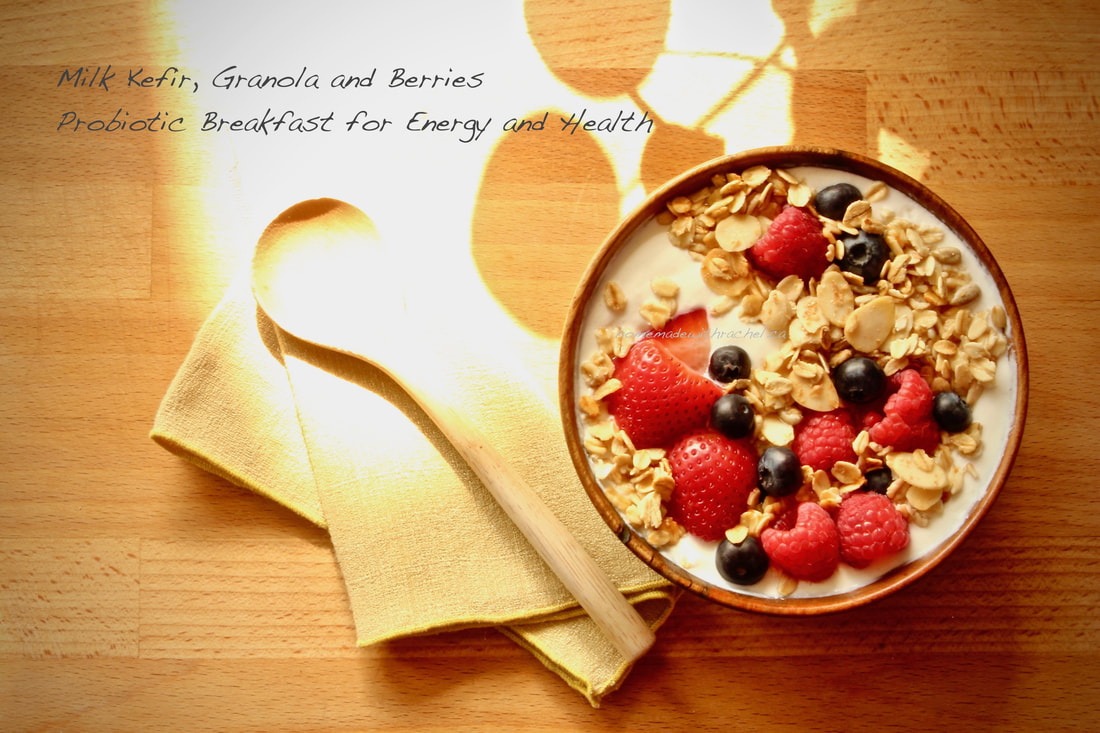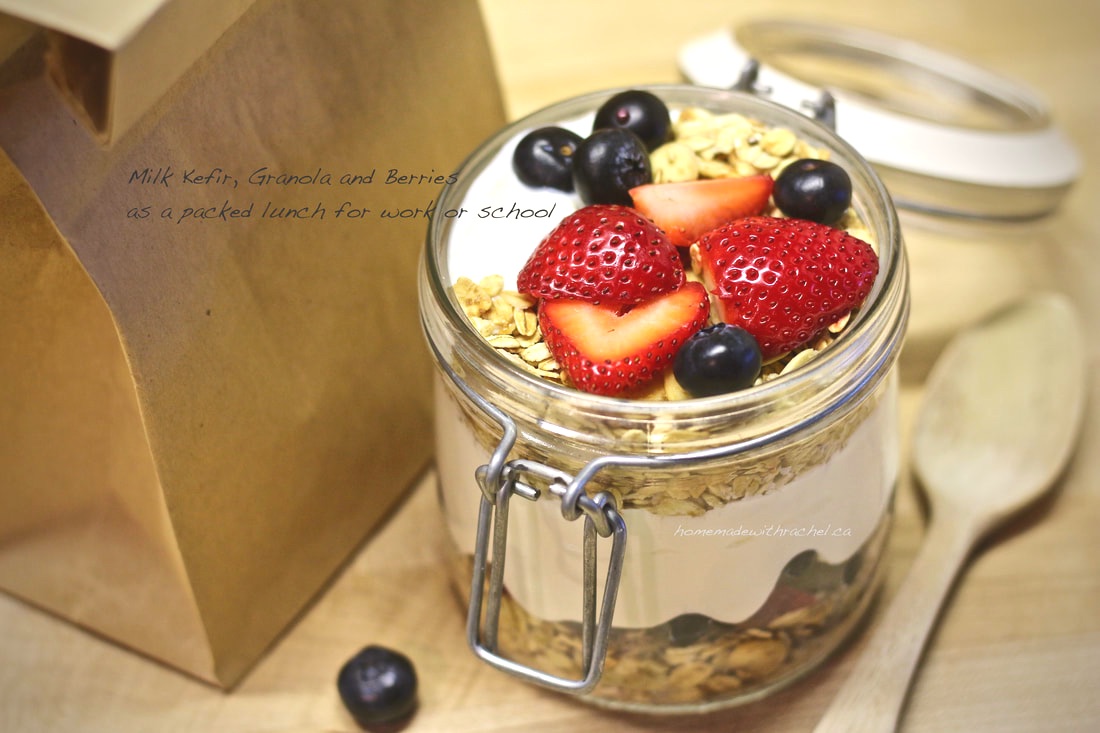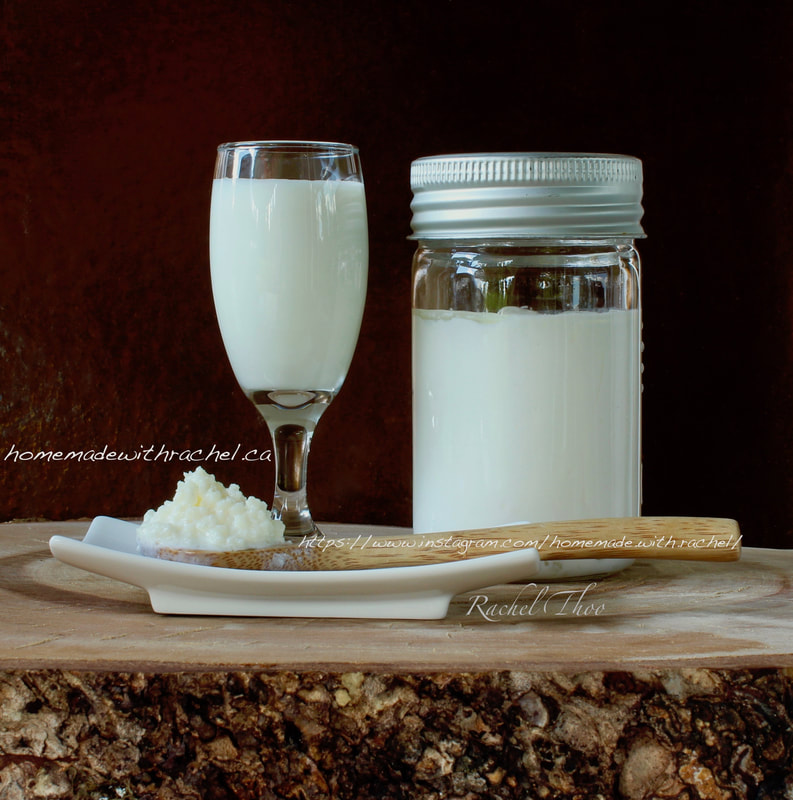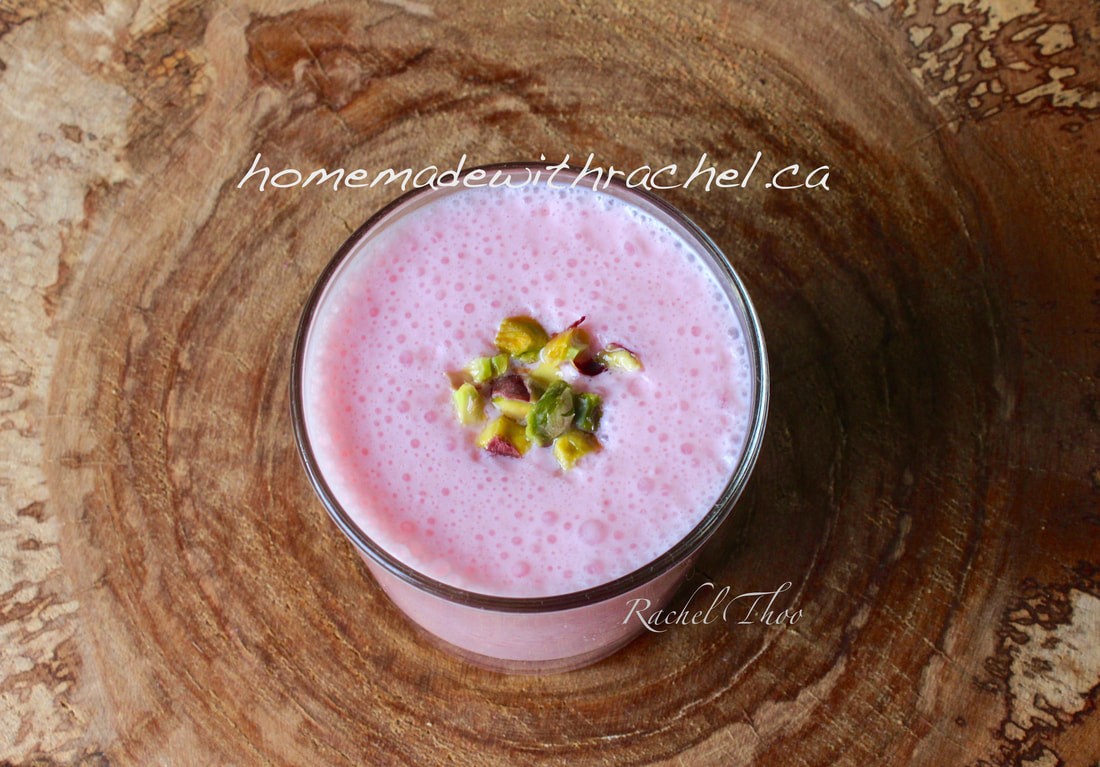|
A large percentage of your immune systems is housed in your gut. For a healthy gut, consuming probiotics such as milk kefir, which are full of beneficial bacteria will help our digestive tract with digesting food. It also helps to absorb vitamins, and support our immune system. This will give one a fighting chance during cold and flu season. Start your day healthy with an easy and slimming breakfast so delicious, it could be eaten as a dessert, yet beneficial for an active lifestyle and brain function! This breakfast of champions will help one feel full and satisfied longer for many hours, without the insulin spikes often followed by sugary breakfasts nor the trigger of hunger pains related to processed breakfasts such as muffins and sugar-laden cereals. A bowl of milk kefir, granola and berries also helps to keep one alert and energised for hours. Each component helps provide protein, and nutrients, helps fight inflammation, and lower cholesterol levels. Milk Kefir is a fermented probiotic drink made from diary of any kind. The live cultures stimulate your immune system, aid in digestion, and improves bone health among other things. To learn more and how to make your own Milk Kefir, click here. The berries are not a decorative token. Besides taste, they are high in antioxidants; and natural plant sugars for improved blood sugar and insulin response. The fiber in both the granola and berries helps to slow down food movement through your digestive tract leading to reduced hunger and increased feelings of fullness. Avoid granola with high sugars/sweeteners and oils. There really isn’t a recipe here to follow. It is simply an ensemble of ingredients that play well together. Milk Kefir is basically a blank canvas you can colour anything with! You could also use yogurt which is slightly thicker. However, milk kefir has more probiotics and protein. You can also put it all in a jar as a packed lunch for work or school. Ingredients 1 cup milk kefir (more or less) ½ cup of low sugar granola or muesli (more or less) Handful of berries Optional: Maple syrup, honey, or sweetener of your choice Fresh fruits, or dried fruits such as goji berries or raisins, coconut flakes, seeds and nuts Method Combine milk kefir, granola (or muesli) and as many berries as you desire into a cereal size bowl. Enjoy! For a transportable packed lunch: Either the night before or in the morning before work/school, layer all ingredients into a non-corrosive (such as glass) 2 cups or more size container, with an airtight lid (I don’t use any kind of plastic but you can). Don’t forget your spoon! Tip #1: For take-outs, you can also bring the ingredients separately in containers or bags to be combined on-site. Tip #2: Adding a piece of washed organic orange or other citrus peel to your homemade milk kefir and fermenting it a second time will increase the vitamins due to prebiotics in the fruit. It will also help to mellow the tang of the milk kefir, besides offering a zesty deliciousness to the drink. Note: the white part of a citrus peel called the pith will make the milk kefir bitter if left for too long. Make sure the pith is not attached to the peel when adding to other ingredients if you do not prefer a bitter taste. Side note: You can purchase milk kefir in stores, but make sure it is not filled with added sugars and fillers. Homemade kefir is better and easy to make. You can order milk kefir grains here: http://www.homemadewithrachel.ca/store/p30/Live_Organic_Milk_Kefir_Grains.html
0 Comments
In recent years, there has been a strong interest in beneficial fermented foods with natural occurring probiotics, such as milk kefir. Store bought milk kefir is usually pasteurized with most of the beneficial microbes destroyed during the process. This is to ensure uniformity and shelf life, but it also limits their good bacteria to a minimum amount. Traditionally homemade milk kefir contains billions of CFU (colony forming units), a spectrum of beneficial microbes, which is the whole point of eating probiotic foods. Can you spare 3-5 minutes a day? That is how long it would take to make milk kefir. It’s easy, and cost effective, and superior to store-bought. What is Milk Kefir? Milk Kefir is a drinkable fermented milk product with a slightly tart taste much like yogurt, and a creamy consistency. There are far more strains of microoganisms in kefir than that of yogurt, making it an excellent source of probiotics. It is pronounced ‘KAH – FEAR’. Milk kefir grains are a living organic culture made up of proteins, sugars, and fats. It is composed of living colonies of various yeasts and bacteria existing in a microbial symbiotic matrix. These microorganisms ferment the lactose in the milk over the course of a day, resulting in a tart and effervescent drink beneficial for its probiotic qualities and gut health. Health Benefits of Milk Kefir Milk kefir is a good source of Calcium, B12, Magnesium, Phosphorus, Riboflavin, and some vitamin D. It contains antibacterial properties to protect against infections, and boost your immune system. Kefir increases the absorption of calcium beneficial for bone health, and lowers the risk of osteoporosis. How Is Milk Kefir Made? Milk kefir is produced by inoculating milk with kefir starter culture called grains and fermented over time. The grains range in colour from pure white to yellowish white. White is the acceptable colour of healthy grains. Yellowish white is the outcome of leaving the grains in the same milk during fermentation for longer than the optimal 24-hour period. They may grow from the size of a rice grain to as large a clump as a cauliflower floret. After successive fermentations, kefir grains can divide into a new generation of grains, which have the same characteristics as the old ones. In short, they make babies and multiply when healthy! Traditionally, milk kefir is made using cow, ewe, goat, or buffalo milk. Raw – unpasteurized whole fat milk has been used with kefir where milk kefir originated somewhere in the Caucasus and Persia. These days, you have the choice of raw, pasteurized, organic or non-organic, full fat, reduced fat, homogenized or a mixture of such milk treatments. You can even use cream! Cow milk will produce a thick, smooth milk kefir, whereas goat milk will create a thinner finish. Sheep and buffalo milk is sweeter and contains more protein, resulting in a thicker, and creamier milk kefir. I highly recommend you use organic full–fat whole milk. The only kind of milk NOT recommended for milk kefir is ultra-high temperature treatment (UHT) milk. However, animal milk might be scarce, expensive, or not consumed due to dietary constraints, preferences, or religious customs. In this case, soy, coconut or almond ‘milk’ can be used in place of animal milk. If you choose to use non-animal milk, note that it is important you put kefir grains in animal milk every few days for a period of 24 hours. This process allows the grains to feed and rejuvenate. You may rinse it with a non-dairy ‘milk’ if you prefer not to consume the slightest bit of dairy. Do not rinse your milk kefir grains in water. Milk Kefir Recipe Ingredients 1 tsp/5 ml of milk kefir grain for every 1-3 cups of milk or 1 TBSP/15 ml of milk kefir grains per 1 quart/1 liter of milk or more * The ratio for grains to milk depends on the temperature of the room, the amount of time you would like it to ferment, etc. More grains mean less fermentation time. A warm room will also ferment the milk kefir quicker. Supplies needed:
Instructions
Milk kefir grains are available to purchase here. Milk Kefir is versatile. You can use it in place of yogurt in most recipes. You can make lassi, dips, ice-cream, labneh, etc. The possibilities are endless. Milk Kefir Hotel: Milk kefir grains can be stored in a "hotel" for a period of time when you are taking a break, or if you have too many grains. With a hotel, you are ensured a backup of milk kefir grains if anything should happen to your ferment. To keep extra grains, simply add enough milk to cover them; let the grains ferment for an hour or 2, and then transfer the jar to the fridge. I like to refresh my hotel milk kefir grains every 4-7 days. When you need a break of 2-3 weeks, add 2-4 cups of milk to 1-2 tsp of milk kefir grains, depending on how long your break period is. Let it sit for an hour at room temperature to get a head start on their feeding, and then refrigerate. Your grains need to be actively culturing for at least a month before putting them away to "sleep" in a hotel. It may take a couple of tries to "wake" them up when you resume your daily milk kefir fermentation with fresh milk. * If you need to rinse your milk kefir grains, rinse them in milk. DO NOT rinse them in water. This is a video I made to show how easy it is to make milk kefir! Follow me on: https://www.instagram.com/homemade.with.rachel/
Subscribe to my Youtube channel: https://www.youtube.com/channel/UCAFl_CDC5YmsJUqoC6j519Q |
AuthorRachel conducts gardening, culinary and fermenting workshops/retreats at her home on 100 acres in Northern Ontario, Canada, where she lives in creative harmony with nature. Rachel’s mission is to ensure the wisdom of our ancestors is preserved for future generations. Archives
July 2020
Categories
All
Images ©2002-2023 Rachel Thoo |
Site powered by Weebly. Managed by Web Hosting Canada




 RSS Feed
RSS Feed